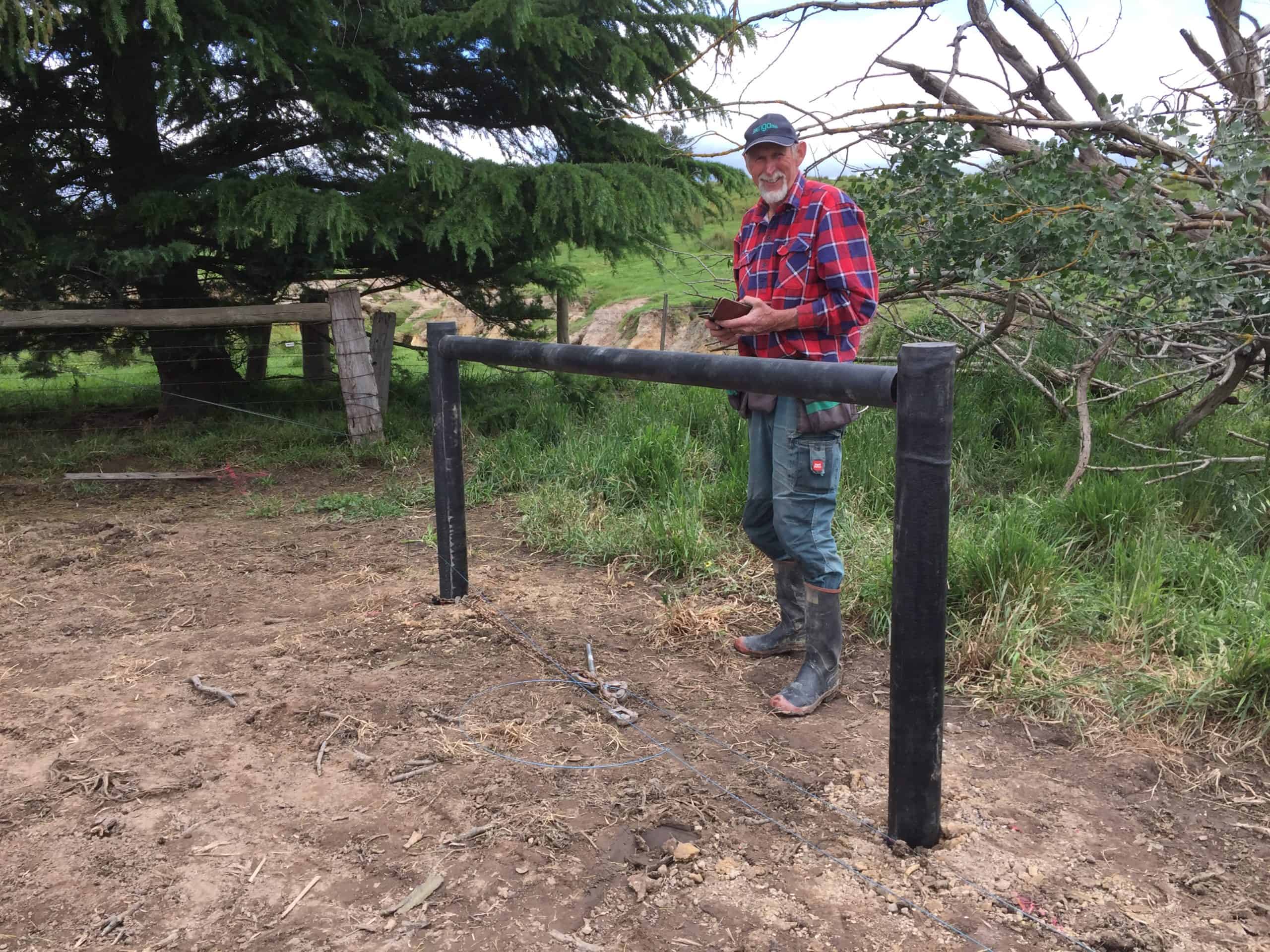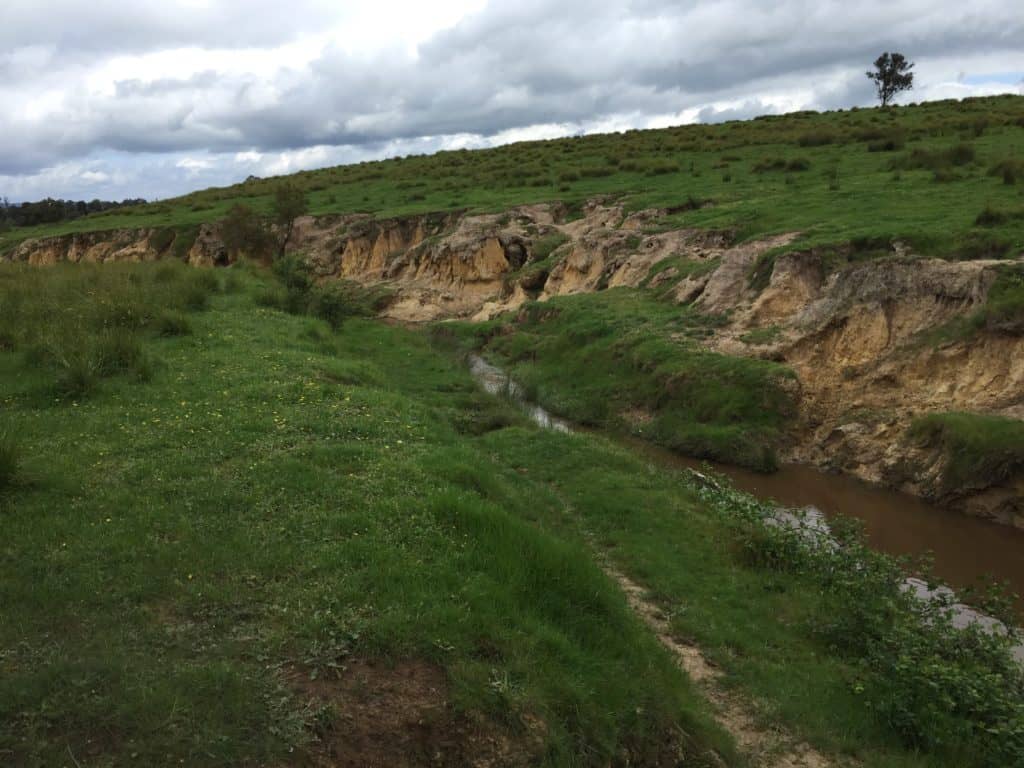Fencing Off and Protecting Waterways

How and Where?
This week’s video follows Alan Upton as he fences off a riparian section along the creek that runs through his farm. Alan’s reasoning was simple. When you compare his side of the fence with his neighbour’s property, both running cattle, the difference is stark. Alan’s property, fenced off into rotationally grazed and fodder paddocks, with the creek fenced off features healthy grass, native animal habitats and stable banks to a creek that sometimes rises 3 meters in a day when heavy rains hit. Just over the fence, weeds, erosion and loss of pasture feature as the creek becomes little more than an eroding drain from which the cattle drink.

Why Do It?
There is no doubt that by protecting waterways we not only look after our downstream neighbours and eventually even our oceans. We should all do it. We know it. It even makes sense financially. Some studies like this one suggest a 1:4 cost/return benefit to establishing riparian buffers. Certainly in Australia, the government recognises the value of clean waterways in a country that struggles at times for reliable sources of water. In Queensland, the management of Riparian zones has been recognised as one of the major contributors to the health of the Great Barrier Reef and commercial fish stocks. So we know we need to do it. But how? Turns out there are some great programs to help with the process out there.

Getting Help
It depends on the state you live in as to the help that is available but most states have useful programs if you are prepared to apply. If you are in Queensland, there are some great resources to help with planning your management strategy. South Australia also has great publications. NSW has a per meter funding approach to Riparian Management. In Victoria, Melbourne Water contributes up to 80% of the cost of fencing and revegetation controls. These are just some of the examples of where the government is rolling up it’s sleeves to protect our natural assets. Check out your local state management authorities for more (and up to the minute) information. You may find a program that suits your needs without cramping your management style. Don’t forget also, that there are non governmental organisations out there that you can plug into. Many local and regional Landcare groups also help with funding, equipment and even volunteers (if you are into that sort of thing…). Certainly check out these groups before you embark on a fencing or re-veg project. You might be surprised at the amount of assistance that is out there for people wanting to protect waterways and improve farm land.
Planning
The fence featured in this video was pretty high tech. Rather than using treated pine posts, Alan elected to use WoodShield plastic laminated wooden posts and high tensile plain wire with a hot wire on standoffs. The fence was put in solidly, using 2400mm posts for the end assemblies driven in 1200mm deep, with 1800mm intermediates every 4m driven in 600mm deep. (That’s 8 foot posts driven in 4 foot and 6 foot posts driven in two foot for you “imperial” people.) This was overkill on the ends, but they sure are not going anywhere!
Prior to fencing, the site was cleaned and the old fence removed before levelling of the new fence and extending into the paddock for a distance of 20m from the creek. This allows a buffer zone of vegetation to be established. The clearing also allowed clear and easy access to build the fence, meaning it was laser straight at the end. The construction of the fence was probably the easy bit in the whole process, with just 5 plain wires run out on the side of stock pressure, then attached with Davo’s fencing clips to ensure long life and little maintenance. A gate was also included at each end of the fence. This was an important and clever addition, as it’s not easy getting any escaped stock out of the creek if you have to walk the entire distance.
I had a great time filming this episode with Alan. I’d especially like to thank WoodShield and my amazing channel sponsors Whites Rural, Wireman and Spiralfast for making it possible to undertake these great ‘over the fence’ projects!
Until next time, take care.
One Comment on “Fencing Off and Protecting Waterways”
Hi Tim,
Thanks for everything you do, I really enjoy your videos. I’m currently looking at moving away from wood posts as legislation in the UK means that they only last around 8 years before rotting off at soil level. We also have Government supported river bank fencing project that are great at reducing erosion. However, it has meant that invasive non-native plants have gone mad along these areas as there is no longer any cattle to eat them.
Thanks again,
JoHn